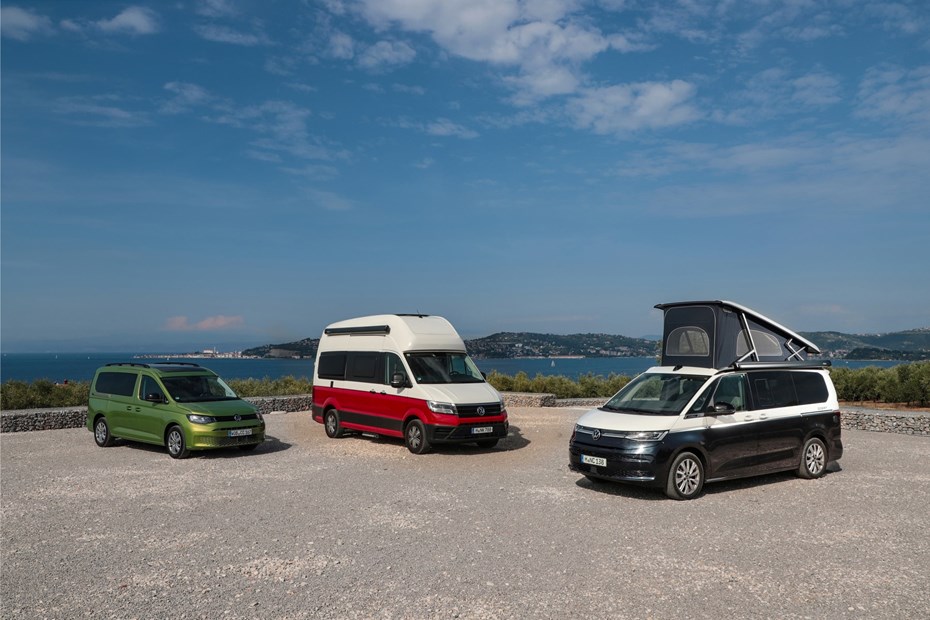Campervans are more popular than ever in the post-pandemic world. And we fully get why – they’re a fantastic way to travel. A camper is a self-contained, controlled space that you can make your own. You only have to pack once. There’s a massive variety of campers available to suit pretty much every need and taste. And, of course, you can take them just about anywhere.
But liking the idea of a campervan and integrating one into your life are very different prospects. It can be the perfect solution for some, completely unworkable for others. There are so many things to think about, so much planning to do and quite a lot of development that needs to happen even before you put your money down on a campervan.
In this guide, we’re going to look at some of the biggest things you need to think about before taking the plunge, and some of the things you need to be aware of once you’re using a camper. It’s by no means an exhaustive list but hopefully provides plenty of food for thought.
Campervan links: essential content to help you on your way
- Parkers’ complete guide to every factory campervan in the UK
- Factory vs converted campervans: weighing which is right for you
- DIY campervan conversions: essential advice for designing your build
- Campervan speed limits: we explain one of the UK’s most confusing road rules
- Motorhome buying advice – which body type is right for me?
- How to prepare your campervan for winter: Parkers’ complete guide
- Parkers’ 16 essential hacks for campervan holidays: practical tips for stress-free travel
- Essential campervan kit: what you really need for life on the road
- Parkers’ guide to taking your campervan abroad: what to know before you go
- Parkers’ guide to camping off-grid
- Parkers’ guide to camping: cars, campers, pets, kids and kit
- Best portable trolley for your campervan
- Best portable power stations for your campervan
Campervan reviews and buying guides
- Auto-Sleepers Kingham buying guide
- Ford Transit Nugget review
- Parkers Mazda Bongo Friendee buying guide
- Mercedes-Benz Marco Polo review
- Volkswagen Caddy California review
- Volkswagen California (T4) review and buying guide
- Volkswagen California (T5) review and buying guide
- Volkswagen California (T6) review
- Volkswagen California (T7) review
- Volkswagen Grand California review
- Which is the best VW California campervan for me?
What actually counts as a campervan?
Let’s start by clarifying what we actually mean by ‘campervan’.
As the name suggests, a campervan starts life as a van – or an MPV in some cases such as the latest Volkswagen California – and a living space is built into its interior. They’re a distinct thing from ‘coachbuilt’ motorhomes, which generally start as a vehicle cab and bare chassis to which a separate body containing the living space is added.
There are innumerable campers available to buy new or used, some built by vehicle manufacturers such as Volkswagen and Ford, others by third-party specialists such as Adria and Hymer. We have a page that covers all the ‘factory’ campers built by vehicle manufacturers, plus a page that explains the different between ‘factory’ and ‘converted’ campervans and covers the pros and cons of each type.
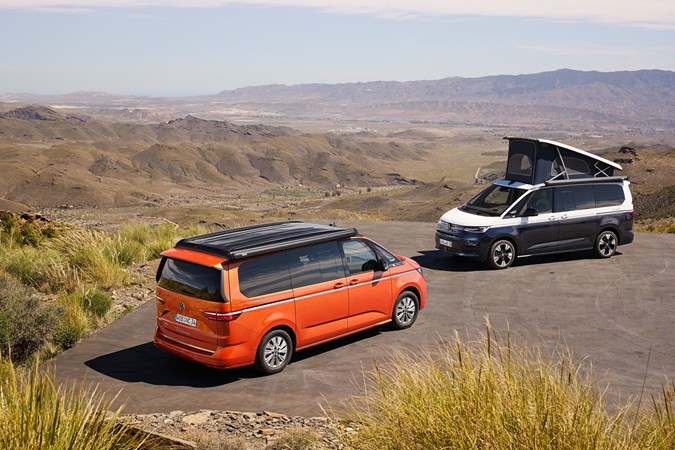
Motorhomes and many campervans are classified as ‘motor caravans’ on their V5C registration documents. It not, the vehicle may be classified as a ‘light goods vehicle’, or ‘private light goods.’ That classification determines how much vehicle excise duty is due and what speed limits apply.
What will you actually use your campervan for?
This is probably the biggest consideration. A campervan can be one of those things you think you’ll use a lot, but actually only get out in once or twice a year. It takes a certain amount of commitment to getting the most out of a campervan and they fit into some lifestyles more easily than others.
Fortunately, campervans are very versatile and have a lot of uses. Holiday travel is the obvious one, but they’re also a great base camp for hikes and bike rides, or a picnic with friends. Just having tea/coffee making facilities, even a toilet and shower, that you can take anywhere is a big attraction.
Also think about what stuff you’ll need in the van and how you’ll live in it. That affects the size, interior layout and specification that works best for you. For instance, if you’ll spend most of the time outdoors, you may be able to live with a smaller lounge area. But you may need plenty of space for muddy boots and an outdoor shower.
If you intend to only use your campervan during summer, check out our page on how to prepare a campervan for a winter off the road.
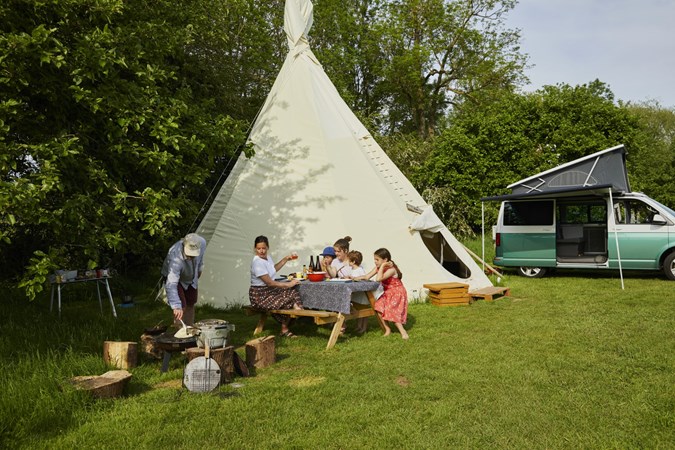
Can a campervan double as your daily driver?
Absolutely. Campers can suit family life perfectly. There’s acres of easily accessible space in passenger-carrying mode and a vast boot, and the vehicle can have all the facilities you need for adventurous days out. Just bear in mind that many only have four seats, and not all of them have Isofix child seat mounts in the back.
The Volkswagen California is particularly popular as an everyday family car, but any based on a medium van or large MPV – such the Ford Transit Custom, Renault Trafic or Mazda Bongo Friendee – work well. Such vehicles are roughly the size of a biggish SUV, are easy and pleasant to drive, and return decent fuel economy. Volkswagen and Ford have recognised how popular campers are as family cars and now offer plug-in hybrid versions of the California (VW) and Nugget (Ford) aimed at company car users.
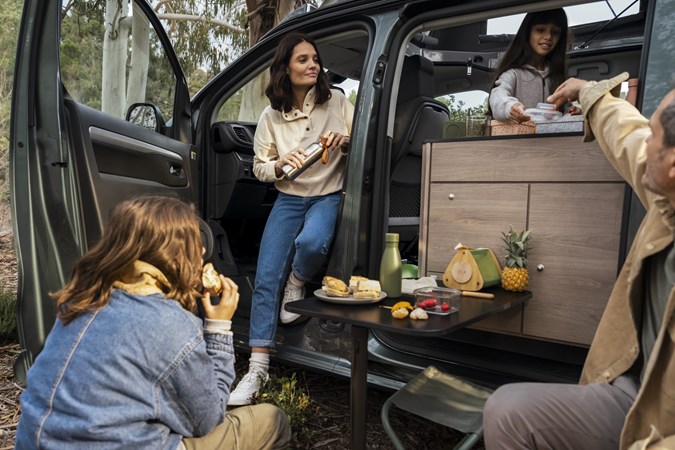
Try before you buy: hire a campervan first
Definitely. You only really know if campervanning works for you by trying it out for a few nights. There are loads of campervan hire companies around the UK; try to rent one that matches the layout and specifications you think you’ll need. Or try several to see what works.
It’ll quickly become apparent whether everyone enjoys the experience. Start by spending a night or two somewhere local so it’s easier to bail out if someone hates it. To head off that possibility, check out our page on the simple hacks for campervan holidays that can make life easier and more comfortable.
What’s the deal with electric campervans?
A very limited choice of electric campervans is available in the UK at the time of writing. They’re all built by camper conversion specialists that use existing electric vehicles such as the Nissan e-NV200 and the VW ID.Buzz. Fiat has also unveiled an EV version of its best-selling Ducato camper/motorhome platform and Volkswagen is working on the ID.Buzz California, both of which should be available from 2026.
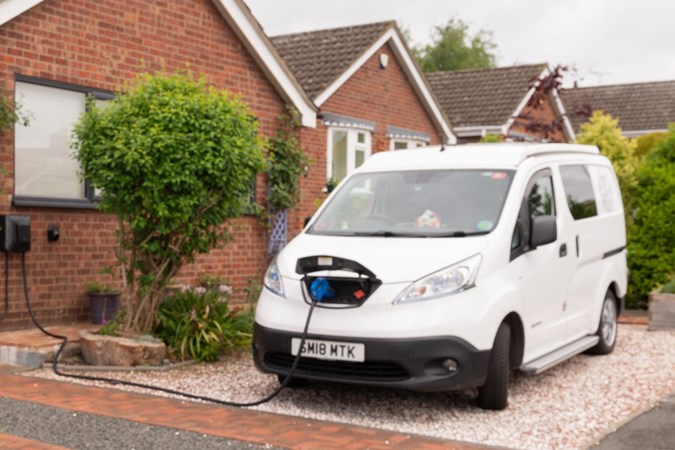
But conversations we’ve had with people in the industry suggest there’s currently little mainstream demand for electric campers. Big-name converted campervan builder Bailey tested the water with the Ford e-Transit-based Endeavour EV concept, but the feedback demonstrated its 108-mile range just wasn’t enough for a camper’s go-anywhere remit. Especially as most campsites don’t have EV charging points.
There is an alternative option in the plug-in hybrid Volkswagen California eHybrid which can cover up to 53 miles on electric power alone. A PHEV version of the Ford Transit Custom Nugget will be launched in late 2026, as well.
Can you legally drive a campervan?
That depends on when you passed your driving test. If you passed after 1 January 1997, you’re restricted to driving vehicles that weigh no more than 3,500kg when fully loaded with passengers, fuel and cargo. If you passed your test before 1 January 1997, you can drive vehicles weighing up to 7,500kg. A vehicle’s maximum weight is known as gross vehicle weight (GVW) or maximum authorised mass (MAM).
A great many campervans have a GVW of 3,500kg or less, however you can easily get caught out. The Volkswagen Grand California 680, for instance, has a GVW of 3,880kg. Lots of large campers have a GVW over 4,000kg, as do most with four-wheel drive.
If you want to drive a heavier camper than your licence allows, you’ll have to upgrade it to at least Category C1, which covers vehicles of 3,500kg to 7,500kg GVW. That means taking theory, practical and certificate of professional competency (CPC) tests to get the upgrade.
Even if you don’t need to upgrade, a campervan may be the biggest vehicle you’ve ever driven, so it’s sensible to get some training before hitting the road. The Caravan and Motorhome Club provide training courses for novice campervan and motorhome drivers.
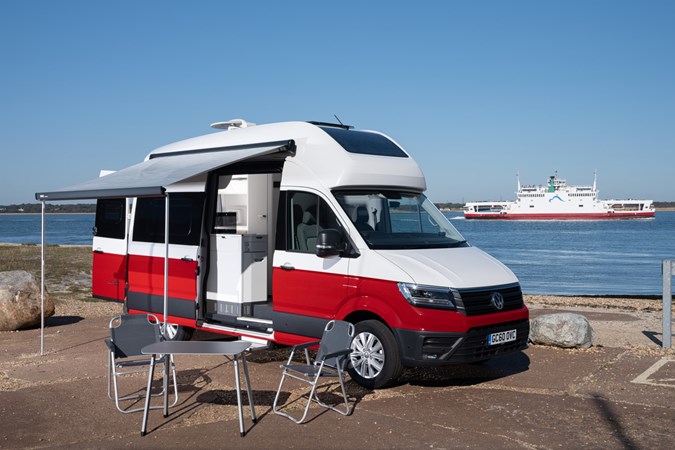
Buy or build your campervan: which is best?
There’s a campervan available to buy new – or used – that suits pretty much every need and taste. But you still might not be able to find one that’s exactly what you want, especially if you’re on a limited budget, so you could build one yourself.
Creating a DIY camper takes a lot of time and effort and requires some degree of practical ability on your part. But you have a lot more freedom to make the vehicle exactly as you want it, and you could save a lot of money in the process. We have a page that covers in detail the considerations and practicalities of tackling a DIY camper van conversion.
What’s it really like living in a campervan?
It may be a home away from home, but living in a campervan for any amount of time is very different to being in a house. That’s because even a large camper is ultimately quite a small space. Minimalism, organisation, cleanliness and tidiness are the keys to a happy life on the road.
Meal planning and prep also require careful consideration, so does choosing the right campsite. You might have to get hands-on making running repairs if bits of your camper’s interior came apart. It can help everyone live harmoniously if they have a place in the vehicle where they can be alone, particularly if you’ve got children.
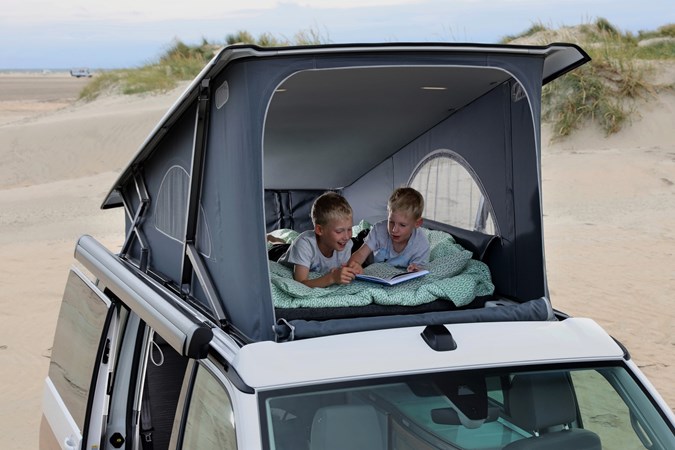
All time spent in a campervan is a learning experience that’ll help you develop your systems and kit list to make living in the vehicle as seamless as possible. We have pages covering our top hacks for campervan holidays and the essential campervan kit you need that should set you off in the right direction.
Where can you actually park and sleep?
Well, you can roam across the UK and Europe and stay wherever you want, right? Not really. In most European countries – including the UK – truly wild camping is prohibited, so you have to stay at designated campsites.
Permanent, managed campsites are usually the best option but choose carefully. There may be one in the perfect location but does it have the facilities you need? And are those facilities in good condition? Internet reviews can be really helpful when choosing. There are lots of permanent and temporary ‘sites that offer more of an off-grid experience, as well.
If you’re caught with nowhere to go, laybys and motorway services can be a viable alternative. Some European countries also have networks of small sites you can stay at overnight without pre-booking, such as France’s ‘aire de service’ (service areas). If you don’t have a fixed destination, it’s always best to have several options in case you don’t like the look of any of them.
We have pages packed with advice on going off-grid with a campervan and taking a campervan abroad.
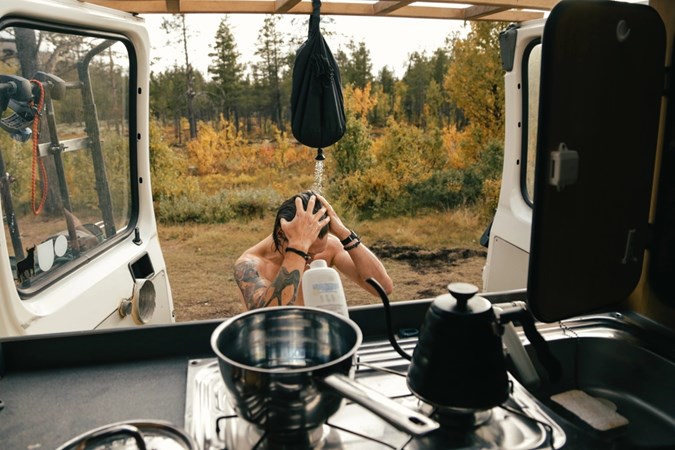
Can campervans tow trailers or cars?
Of course you can. You could pull a car to use for getting around while you stay at a site, or pull a trailer for extra storage. You could attach a bike rack or storage box to it. Whatever you use a towbar for, make sure you don’t exceed your vehicle’s towing capacity.
If you’re buying a new vehicle, tick the towbar box on the options list. If you’re buying a used vehicle that doesn’t have a towbar, get one that’s approved for use on that vehicle from a reputable supplier. It’s best to have it fitted professionally, as well.
What insurance do you need for a campervan?
Most generic car and van insurance companies will provide cover for a campervan, however you’re better off taking out a specialist policy such as those provided by the Caravan and Motorhome Club. They’re worth getting if for no other reason than they provide better coverage for personal belongings. Check mileage limits and any usage restrictions carefully.
How do power, gas and water work in a campervan?
Most campervans have an on-board electricity supply from a leisure battery plus a mains hook-up; a gas supply if there’s a cooker hob fitted and/or a hot water supply; clean and waste water tanks if there’s a sink and/or shower. They all need managing and handling properly and safely.
The leisure battery powers a camper’s living space electrics. How long it lasts before running out of charge depends on how big the battery is and how many electrical items are in use. Using a mains hook up when available keeps the battery charged.
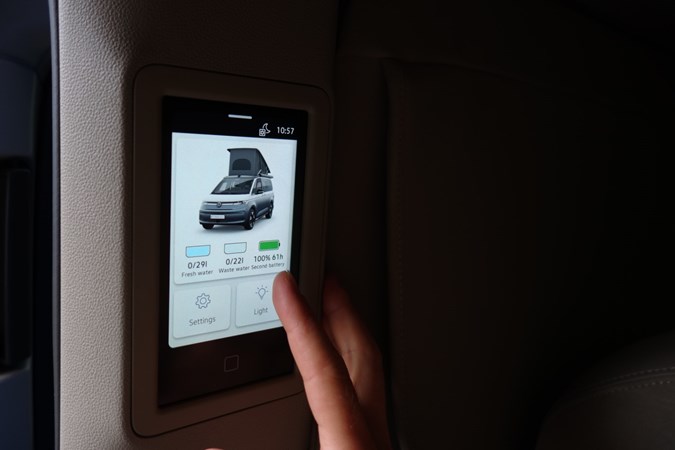
Gas bottles must be kept and secured in their dedicated compartment. Some campers use butane gas, others use propane – always make sure you get the right one. How long a bottle lasts depends on how much you use the cooker and hot water. The bottle is refillable and easily removed; make absolutely sure the connections are secure when you replace it. Turn the gas off when it’s not in use.
The clean and waste water tanks are kept separate. They’re easily refilled/emptied; in some cases they have to be removed to do so. Make sure you give the tanks a good swill out as part of the process. As ever, how long the tanks last depends on how much water you use.
Many of the latest campervans have an on-board monitoring system that shows how much water is in the tanks, and how much charge is in the battery. Gas levels aren’t monitored because you can’t put a sensor in the bottle. You’ll learn over time how much of the utilities you consume and how often they need replenishing.
Ideally, you should have the electrical, gas and water systems inspected regularly to check everything’s working properly. The water system needs regular cleaning, as well. These systems are safety critical. Electric problems can cause fires, water tanks can be a breeding ground for germs, gas leaks can kill.
Toilets, showers and hygiene: what to expect
That depends on what sort of campervan you have. Smaller ones only have a sink you can just about wash in, some also have an external shower to hose yourself down. You could get a portable toilet and shower and set them up in a tent next to your camper. Otherwise, you’re heading to the campsite’s toilet and shower blocks.
Many larger campervans have a proper toilet and a washroom with sink and shower. The toilet will need emptying periodically – don’t wait until it’s full. Only empty it at appropriate facilities – it’s an offence to dump the contents on the ground and it’s not on to empty it into a toilet connect to the sewage system.
Clean the toilet thoroughly and replenish the chemicals. A camper’s waste water tank also needs emptying periodically. Again, only use appropriate facilities, then clean it thoroughly. You don’t want germs and mould developing in there.
Just so you know, we may receive a commission or other compensation from the links on this website - read why you should trust us.


